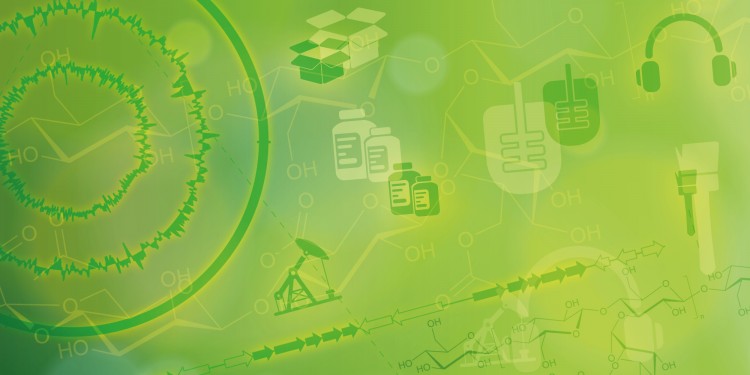
"Biopolymers are non-toxic for humans and animals"
With the end of the “petroleum age” – i.e. replacing oil with sustainable bio-resources – renewable raw materials are becoming increasingly important for commerce and industry. They can help find solutions to global environmental problems which contribute to health issues, climate change and species becoming extinct. In this interview with Kathrin Nolte, Prof. Jochen Schmid from the Institute of Molecular Microbiology and Biotechnology talks about the potential in “biologizing” processes and products and explains what interdisciplinary research focuses exist in this field at the University of Münster.
How important are so-called biopolymers in the use of sustainable resources?
Biopolymers have outstanding material properties, a wide range of biological functions, and very promising biomedical applications, so they have enormous potential for “biologizing” processes and products. These range from completely degradable synthetics and materials which represent no risk to health and can be used for example in the automotive, packaging, food and cosmetics industries, to active ingredients and agents for agricultural and medical purposes – environmentally friendly and with very few side-effects. They are highly suitable to take over from petroleum-based chemical polymers in these applications and, in the long term, perhaps even replace them completely. And biopolymers are non-toxic for humans and animals, do not accumulate in the environment – because they are easily degradable – and do not pollute the soil, groundwater, the oceans or the atmosphere.
What exactly are biopolymers?

A lot of researchers at Münster University are involved in basic and applications-oriented research on a large number of biopolymers. What research focuses are there at the University?
The focus of biopolymer research is on understanding how the structure and function of biopolymers are connected, and on how the organisms manage to produce this variety. We are an interdisciplinary group of biologists, chemists, physicians and physicists, and we believe that the principle of modular structure is the secret. We’re looking for the molecular ‘tools’ that nature uses to achieve that. In future, we plan to make use of precisely this modular building-bricks system by combining properties of different biopolymers with each other, depending on requirements. As we use natural processes, our designer biopolymers remain environmentally friendly – irrespective of whether we’re talking about car tyres or pesticides. Something we shouldn’t forget are the numerous collaborations with Münster University of Applied Sciences and with research institutes outside university – such as the Max Planck, Fraunhofer and Julius Kühn Institutes – which make a decisive contribution to the success of basic and applied biopolymer research in Münster.
What are the processes and products that biopolymers can be used for in future?
The functions of biopolymers might be that for example they have anti-microbial properties or provide structure or bind large quantities of water. So today they are already relevant to a wide range of applications such as hyaluronic acid in cosmetics, alginates and chitosan in medicine, or natural rubber from dandelions in tyres for bicycles and cars. Modern nanotechnologies also provide new opportunities for developing biopolymers with new properties – for use for example in food production, agriculture, pharmaceutical products and medical technology, as well as in the chemical industry and automobile construction. The list is almost endless.
